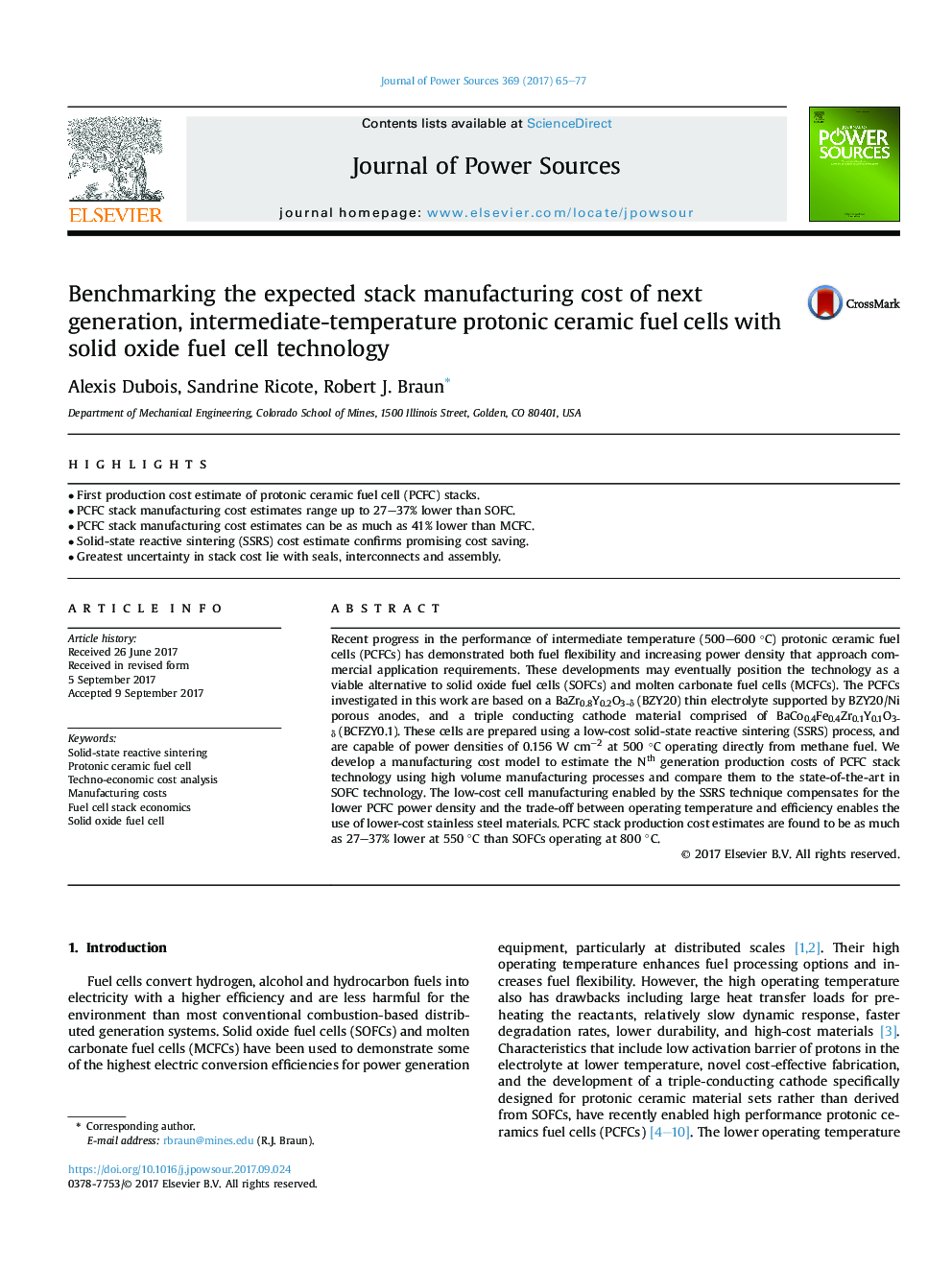| Article ID | Journal | Published Year | Pages | File Type |
|---|---|---|---|---|
| 5148668 | Journal of Power Sources | 2017 | 13 Pages |
Abstract
Recent progress in the performance of intermediate temperature (500-600 °C) protonic ceramic fuel cells (PCFCs) has demonstrated both fuel flexibility and increasing power density that approach commercial application requirements. These developments may eventually position the technology as a viable alternative to solid oxide fuel cells (SOFCs) and molten carbonate fuel cells (MCFCs). The PCFCs investigated in this work are based on a BaZr0.8Y0.2O3-δ (BZY20) thin electrolyte supported by BZY20/Ni porous anodes, and a triple conducting cathode material comprised of BaCo0.4Fe0.4Zr0.1Y0.1O3-δ (BCFZY0.1). These cells are prepared using a low-cost solid-state reactive sintering (SSRS) process, and are capable of power densities of 0.156 W cmâ2 at 500 °C operating directly from methane fuel. We develop a manufacturing cost model to estimate the Nth generation production costs of PCFC stack technology using high volume manufacturing processes and compare them to the state-of-the-art in SOFC technology. The low-cost cell manufacturing enabled by the SSRS technique compensates for the lower PCFC power density and the trade-off between operating temperature and efficiency enables the use of lower-cost stainless steel materials. PCFC stack production cost estimates are found to be as much as 27-37% lower at 550 °C than SOFCs operating at 800 °C.
Keywords
Related Topics
Physical Sciences and Engineering
Chemistry
Electrochemistry
Authors
Alexis Dubois, Sandrine Ricote, Robert J. Braun,
